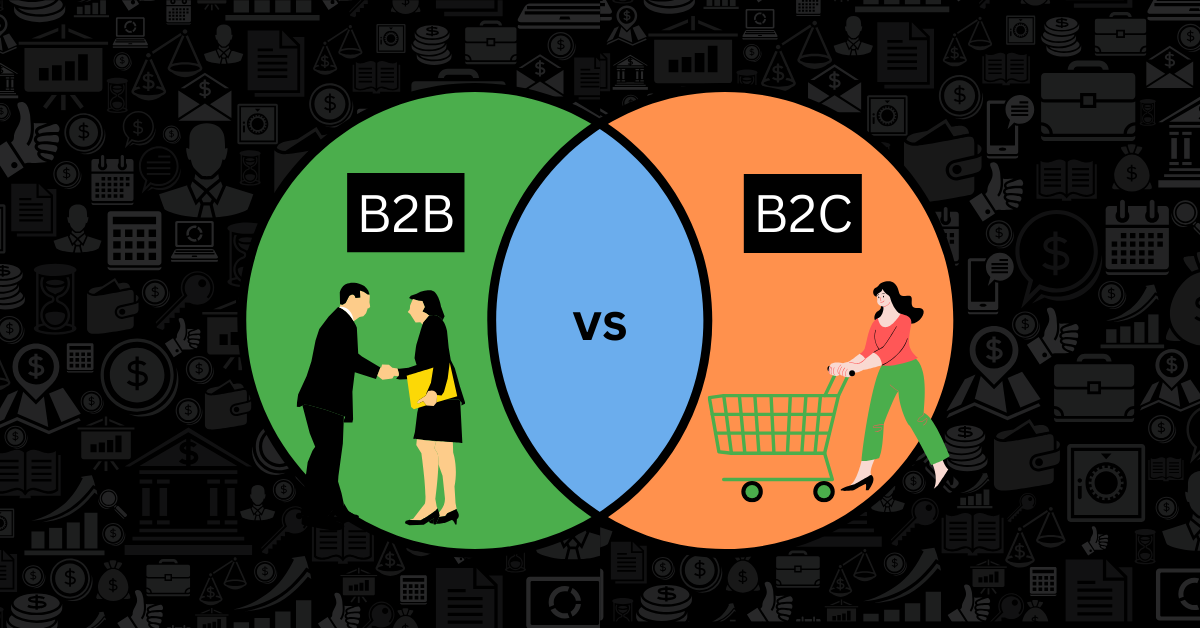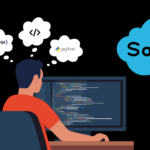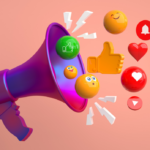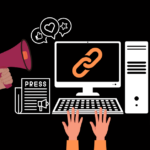We live in a world full of angles. In everything from business to spiritual beliefs to political ideologies. There is never one answer. There are always multiple ways people can look at, and think about things.
For example, what SaaS sector has the biggest market share?
Customer service? Nope. What about marketing? Not even close. Nearly 25% of the SaaS market share belongs to productivity and collaboration. It’s weird how the answer is not always what we think it will be, isn’t it?
SaaS is really just an umbrella term. And it’s a big-ass umbrella. We’ve got B2C SaaS marketing, B2B, B2B vs B2C SaaS, and even B2B2C SaaS businesses out there. On top of that, there are horizontal products, vertical, PaaS, IaaS, and so on.
There is no shortage of variance. With all these different products and services, how do you decide on what market to enter?
You need to know the nuances between all the SaaS models before launching. Before you file for an LLC. Before you knock on VC doors or appear on Shark Tank.
Let’s decode and distinguish the key differences between B2B vs B2C SaaS so you can start building out your idea with the right market in mind.
Table of Contents
Key Differences: B2B SaaS vs B2C SaaS

Five main differences truly separate these two types of SaaS products. In the battle of B2B SaaS vs B2C SaaS, here’s how the two fighters match up.
- Target Audience: The primary target audience of B2B SaaS are enterprises, while B2C SaaS caters to individual consumers.
- Sales Cycle: The sales cycle for B2B SaaS is longer than for B2C SaaS due to the complexity of decision-making in enterprises.
- Revenue Model: B2B SaaS generates higher ARPU than B2C SaaS, which relies on a larger customer base for revenue generation.
- Customization and Scalability: B2B SaaS products are highly customizable and scalable, while B2C SaaS products are more standardized and user-friendly.
- Customer Support: B2B SaaS companies prioritize customer support, while B2C companies focus on self-help resources and online communities for support.
Below, we’re going to break this down a bit more. You’ll get a better idea of where your product fits in the market and how you can design and market it to the right people.
B2B VS B2C SaaS: A Closer Look at the B2B Side
The B2B vs B2C SaaS argument. A tale as old as time. By time, we mean since SaaS became a thing less than 25 years ago.
The B2B sector is a business model selling software to other businesses. The primary target audience of B2B SaaS products has historically been enterprises and corporations. However, now small-medium businesses (SMBs) are also investing in SaaS products.
Individual consumers won’t have use for these products. They’re specifically designed to help companies be more productive, track metrics, and automate various processes.
There are two key differentiating factors of B2B products.
- The first lies in its focus on solving complex business problems.
- The second element is all about providing value to organizations through its software solutions.
Key Characteristics of B2B SaaS
- Long Sales Cycle: The business world is complex. B2B SaaS products have a longer sales cycle compared to their B2C counterparts. The decision-making process in enterprises involves multiple stakeholders. On top of that, the sales process can take months or even years.
- High Average Revenue Per User (ARPU): B2B SaaS products target organizations. So, the ARPU generated from each customer tends to be higher than that of individual consumers. Enterprises have more extensive budgets and can afford premium software solutions. If they need to spend $10,000 a month to make or save $100,000 a month, they can and will.
- Customization and Scalability: B2B SaaS products cater to each enterprise’s unique needs and requirements. They need to be highly customizable and scalable. It allows businesses to tailor the software according to their specific processes and workflows – optimizing their operations.
- Emphasis on Customer Support: B2B SaaS companies prioritize following SaaS customer support best practices. Enterprises rely heavily on their software solutions. In case of any technical issues, businesses need quick and efficient resolution to minimize disruptions.
Understanding B2C SaaS: Diving Deeper
B2C SaaS, on the other hand, caters to individual consumers rather than organizations.
It refers to a business model in which businesses sell software directly to end-users for personal use. B2C SaaS products are typically more affordable and have a faster sales cycle than B2B SaaS.
Key Characteristics of B2C SaaS

- Short Sales Cycle: The sales cycle for B2C products is relatively short. Fewer decision-makers are involved. If you want something, you buy it. It’s as simple as that. Consumers can make quick purchasing decisions based on factors like price, features, and user experience. Your spouse may say otherwise. But in the eyes of sales, that’s how it is.
- Low Average Revenue Per User (ARPU): B2C SaaS products usually have a lower ARPU than B2B SaaS. The average consumer doesn’t have tens of thousands of dollars to spend on software that makes their personal lives easier. Luckily, they don’t need to. Many B2C companies offer free or freemium options.
- Standardized and User-Friendly: B2C SaaS products have a standardized user interface and are designed to be intuitive and user-friendly. It’s about the mass market., B2C companies prioritize simplicity and ease of use in their solutions.
- Limited Customer Support: Customer support is not a top priority for B2C companies. It’s important, but its value can sometimes play second fiddle to the B2B world. Why? Most consumers do not rely as heavily on their software solutions. Self-help resources and online communities like those found in our SaaS crash course list are the main channels for B2C support.
Impact of These Differences on Business Strategy (Start Here)
The differences between B2B vs B2C SaaS products may seem insignificant to anyone unfamiliar with running one of these businesses. We assure you, they are colossal.
Knowing where your SaaS product fits and doing the proper research to understand your audience and know what they want is the difference between a great start and closing up shop early.
You need to know both sides, no matter which one your product falls under. Knowledge is power and it will help you develop effective strategies that cater to your target audience and meet their unique needs.
A Few Tips for Success

Understanding the key differences between these models becomes increasingly important as SaaS continues to grow and evolve. It’s only a matter of time before the lines separating the two start to blur.
In fact, that process is already happening. Here are some tips for successfully navigating the intricate SaaS landscape:
- Know Your Target Audience: Identify whether your target audience is enterprises or individual consumers. These audiences require much different messaging. Tailor your strategies accordingly.
- Focus on Customer Needs: Whether it’s customization and scalability for B2B or user-friendliness for B2C, prioritize meeting the specific needs of your target audience.
- Build Strong Relationships: For B2B companies, building trust and strong relationships with potential clients is necessary for success.
- Leverage Technology: You are a tech startup. Embrace technology as a whole by using SaaS digital marketing automation tools. Use them to streamline processes, improve customer experience, and gain a competitive advantage in the market.
- Stay Agile: The best fighters are the most agile. Even in the late rounds, they’re still able to bob and weave to distract their opponents and create openings. As a company, you should stay agile and adapt quickly to changing trends and customer needs.
And as far as the lines starting to blur…
A New Challenger Arrives: B2B2C SaaS Solutions
B2B2C is a business model where a product or service supplier sells to a business, which then sells to the end consumer. It’s a method that’s becoming popular because it allows businesses to expand their reach without having to market directly to consumers.
By partnering with another business with an established customer base, they can tap into a new market and potentially increase sales.
It’s a win-win situation for all parties involved. The first business expands its market, the second business offers its customers a new product or service, The consumer can access a wider range of options.
AppSumo is a perfect example of a company that uses this B2B2C SaaS model. They partner with various B2B software companies and offer their products to their extensive consumer base at discounted prices.
B2B VS B2C SaaS Models: The Lines Will Continue to Blur
B2B vs B2C SaaS – the lines will continue to blur. It’s only a matter of time before neither of them can tell me how many fingers we’re holding up.
But can any fighter after a long, hard bout? The difference between being a conqueror and being conquered is who is willing to keep getting up. Who continues to take a beating long after they are tired, bruised, and beaten.
Right now, there is no clear winner in the B2B SaaS vs B2C SaaS space. They’re both still incredibly different. They have completely different products for completely different markets.
B2B SaaS digital marketing is aimed at enterprises, and B2C SaaS marketing is directed at individual consumers. And the emerging B2B2C SaaS model taps into both markets.
The key to succeeding in this dynamic environment lies in understanding your target audience, tailoring your product to their specific needs, and maintaining agility to adapt to changing trends and circumstances.
The potential for innovative solutions and business models like B2B2C only increases. As the model evolves, it will continuously offer new opportunities and challenges.





I’ve been following this blog for years and it’s amazing to see how much it has grown and evolved Congratulations on all your success!
Thanks on behalf of the whole LMC team!